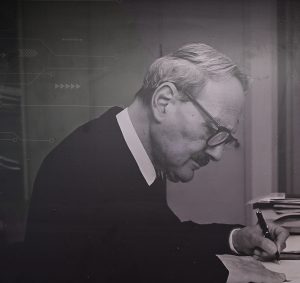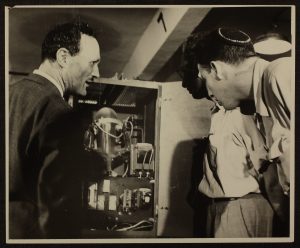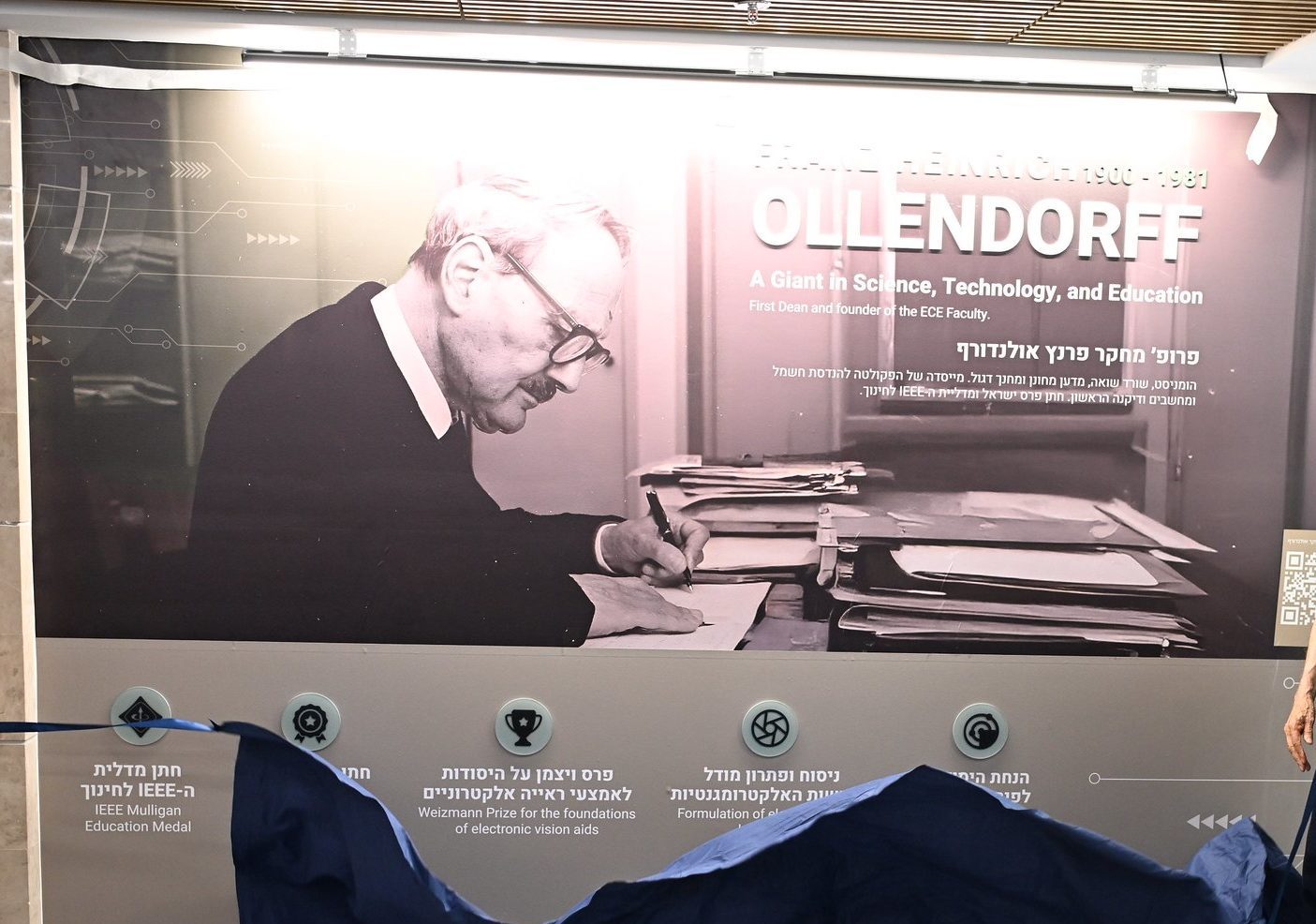125 Years Since the Birth of Franz Ollendorff
The story of a humanist and polymath who founded the Andrew and Erna Viterbi Faculty of Electrical and Computer Engineering at the Technion laid the theoretical foundation for radar development and paved the way for advancements in electron microscopy
Prof. Franz (Chaim) Ollendorff was born in Berlin 125 years ago, on March 15, 1900, and passed away in 1981. The Ollendorff Minerva Center for Vision and Image Sciences at the Technion is named in his honor.
When he made Aliyah and joined the Technion in 1937, Ollendorff epitomized the synergy between science, technology, and Zionism. Upon joining the Technion he established the department that would one day become the Andrew and Erna Viterbi Faculty of Electrical and Computer Engineering. He served as its first dean, and under his leadership, the faculty expanded beyond the classical field of “electrical engineering” to include electronics, communications, and computers. He was the first person in the history of the Technion to be appointed Research Professor, the institution’s highest academic title. In 1954, he was awarded the Israel Prize for Exact Sciences.

Ollendorff studied engineering at the Technical University of Berlin and attended lectures by Max Planck and Albert Einstein at Humboldt University, where his academic and personal relationship with Einstein began. In Berlin, he also became a friend of Leo Szilard.
He completed his doctoral dissertation in one year and became a faculty member at the University of Danzig. He was dismissed in 1924 due to antisemitism and moved to Siemens. Later, he became a lecturer at Berlin Technical University, where he worked alongside Prof. Ulrich, head of the Theoretical Electrical Engineering Department, who saw him as his natural successor. However, in 1933, Ollendorff was dismissed under the Nazi racial laws, which revoked academic appointments from non-“pure” Germans.
A true polymath, Ollendorff’s multidisciplinary research spanned a wide spectrum of topics and fields, including electromagnetism, radar, and the biophysics of vision and hearing, drawing on Einstein’s theories and other groundbreaking physics. His work contributed to the development of electron microscopy – a technology enabling the magnification of tiny objects up to 10 billion times, making it possible to observe viruses and molecular structures.

According to Prof. Ido Kaminer of the Viterbi Faculty of Electrical & Computer Engineering, “Ollendorff was one of the pioneers of electron microscopy and the first to apply Einstein’s relativity theory to analyze the dynamics of free electrons in electromagnetic fields.” Kaminer’s cutting-edge research on electron microscopy builds on the foundations laid by Ollendorff.
As a humanist, Ollendorff dedicated much of his time to education, believing that, “Jewish youth must be exposed to science at an early age.” He volunteered as a teacher at the BOSMAT School, which produced many graduates who later pursued studies at the Technion and played key roles in shaping Israel’s high-tech industry.
Committed to knowledge dissemination, he opposed patenting his many inventions, ensuring that scientific progress remained accessible to all.
Ollendorff received numerous prestigious awards, including the Israel Prize, the IEEE Mulligan Education Medal, the first-ever Weizmann Prize, and the Rothschild Prize. He was awarded an Honorary Doctorate from the Technical University of Berlin and became the first Technion-affiliated member of the Israel Academy of Sciences and Humanities.
“Ollendorff introduced us to the wonders of science in our youth. But above all, he taught us to love science,” Yossi Ackerman, former student of Ollendorff at BOSMAT and the Technion, later CEO and President of Elbit Systems and a public figure.




